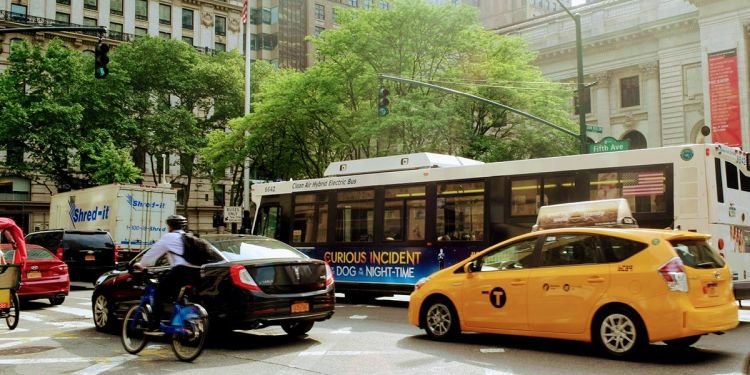Comparing Public Transit and Commuting Options in New York City vs. California
 Public transit and commuting options play a significant role in shaping the daily lives of residents in both New York City and California. While each location offers distinct transportation systems tailored to the unique needs and landscapes of their respective regions, there are key differences and similarities worth exploring. In this article, we compare public transit and commuting options in New York City and California, examining the advantages, challenges, and cultural aspects of each.
Public transit and commuting options play a significant role in shaping the daily lives of residents in both New York City and California. While each location offers distinct transportation systems tailored to the unique needs and landscapes of their respective regions, there are key differences and similarities worth exploring. In this article, we compare public transit and commuting options in New York City and California, examining the advantages, challenges, and cultural aspects of each.
Public Transit in New York City
New York City is renowned for its extensive and iconic public transit system, which includes subways, buses, commuter trains, and ferries. The Metropolitan Transportation Authority (MTA) operates the subway system, one of the largest and busiest in the world, serving millions of passengers daily across five boroughs. With 24-hour service and frequent trains, the subway offers unparalleled accessibility and convenience for city dwellers and commuters alike.
Complementing the subway are the city’s bus routes, which provide additional coverage and connectivity to areas not served by rail. Commuter trains, such as the Long Island Rail Road (LIRR) and Metro-North Railroad, offer express service to the surrounding suburbs, catering to a diverse workforce that commutes into the city for work.
Public Transit in California
In contrast to New York City’s dense urban landscape, California’s public transit systems are more varied and decentralized, reflecting the state’s sprawling geography and diverse communities. Major cities like Los Angeles, San Francisco, and San Diego operate extensive bus and light rail networks, providing essential connections within urban centers and surrounding suburbs.
Additionally, California is home to innovative transportation initiatives, such as ride-sharing services, bike-sharing programs, and electric scooters, which offer alternative modes of transportation for short-distance travel. However, the state’s reliance on automobiles remains prevalent, with many residents opting to drive due to limited public transit coverage and perceived convenience.
Advantages and Challenges
Both New York City and California offer unique advantages and challenges in terms of public transit and commuting options you should know about when moving from California to New York. In New York City, the comprehensive subway system and 24-hour service provide unmatched accessibility and convenience, allowing residents to navigate the city efficiently and affordably. However, overcrowding, delays, and maintenance issues are common concerns that can disrupt commuters’ daily routines.
In California, public transit systems offer flexibility and convenience for intra-city travel, particularly in urban centers like San Francisco and Los Angeles. Additionally, initiatives to promote sustainability and reduce carbon emissions align with the state’s environmental priorities. However, sprawling suburbs and limited funding for public transit infrastructure present challenges in providing comprehensive coverage and connectivity across regions.
Cultural Aspects
Beyond the practical considerations of public transit, commuting options in both New York City and California reflect cultural norms and preferences. In New York City, the subway serves as a melting pot of diversity, where commuters from all walks of life come together in a shared space. The hustle and bustle of the subway embody the city’s energy and dynamism, fostering a sense of community among its riders.
In California, the car-centric culture and emphasis on individual mobility reflect the state’s pioneering spirit and entrepreneurial mindset. Despite efforts to promote alternative transportation modes, the allure of car ownership and the freedom it provides remain deeply ingrained in the California lifestyle.
Conclusion
Comparing public transit and commuting options when moving from California to New York highlights the diverse transportation landscapes and cultural nuances that shape the daily lives of residents. While New York City boasts a robust and iconic subway system that serves as the backbone of urban mobility, California offers a more decentralized approach with a focus on innovation and sustainability. As cities and regions continue to evolve, the ongoing quest for efficient, accessible, and environmentally friendly transportation remains a shared priority for communities across the country.